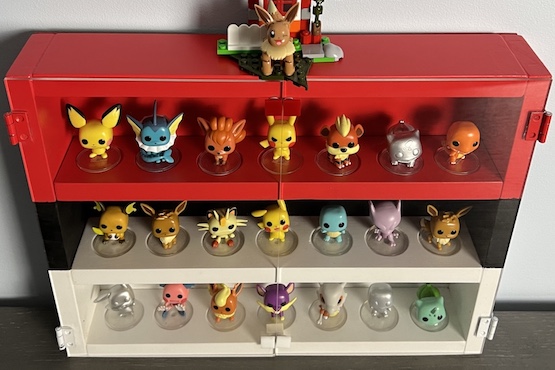Refine your home décor with our DIY floating shelf project plans. Choose from several designs to find the perfect plan to create stylish, space-saving floating shelves.

LED Floating Shelves

Wine Rack Shelf

Action Figure Display Shelf

Corner Shelves

Picture Ledge Shelves

Modern Wall Shelf Stocking Holder

Modern Hexagonal Floating Shelves

Hanging Storage Shelf

Floating Wall Mounted BookShelf

Floating Shelves with Sides

Floating Shelves

Floating Adjustable Shelves
Your Guide to DIY Floating Shelves
In the dynamic world of home decor, do-it-yourself (DIY) projects have emerged as a powerful means of personal expression and creativity. Among these projects, the DIY floating shelves stand out as a trend that seamlessly blends functionality with aesthetic appeal. This guide aims to thoroughly explore the myriad benefits of incorporating floating shelves into your home decor and provide an exhaustive roadmap for crafting your own visually stunning and highly practical shelves.
Understanding the Allure of DIY Floating Shelves
Versatility in Design and Functionality
DIY floating shelves present a canvas of endless design possibilities, allowing homeowners to express their individuality. Their adaptability makes them suitable for various aesthetics, ranging from sleek and modern to rustic or eclectic. The ability to customize these shelves allows for a unique addition to any interior style, providing a personalized touch to your living space.
Space-Saving Benefits and Aesthetic Appeal
One of the most significant advantages of floating shelves lies in their capacity to maximize space while contributing to a modern and clutter-free aesthetic. The illusion of suspension creates an open and uncluttered look, making them an ideal choice for smaller spaces or those seeking a sleek and contemporary vibe.
Customization Possibilities for Various Room Styles
The charm of DIY floating shelves lies in their adaptability to different rooms and styles. Whether enhancing the warmth of a living room, creating a chic display in the bedroom, or organizing the kitchen efficiently, these shelves can be tailored to meet the unique demands of each space. The customization possibilities provide an opportunity to harmonize your shelves with the overall design theme of your home.
Planning Your DIY Floating Shelves
Assessing Your Space and Determining Ideal Locations
Before embarking on the construction phase, a thoughtful assessment of your space is crucial. Consider room dynamics, lighting conditions, and overall layout to pinpoint the most suitable locations for your floating shelves, ensuring both functionality and visual appeal. Consider focal points and traffic flow for optimal placement.
Choosing the Right Materials for a Sturdy and Visually Appealing Finish
The choice of materials plays a pivotal role in the durability and visual appeal of your floating shelves. Explore different wood types, considering factors such as hardness, grain pattern, and sustainability. Additionally, delve into finishing options, whether it’s the natural warmth of a stained wood finish, eco-friendly water-based paints, or the versatile charm of distressed or reclaimed wood.
Calculating Dimensions Based on Your Storage Needs
Crafting functional floating shelves requires meticulous consideration of dimensions. Calculate the ideal width, depth, and height based on your storage needs and the items you plan to display. Achieving a harmonious balance in dimensions contributes significantly to the visual appeal of your finished shelves. Use these calculations to create a detailed plan or blueprint for your project.
Essential Tools and Materials
Overview of Basic Woodworking Tools Required for the Project
Gathering the essential tools is a pivotal step in your woodworking venture. From saws and drills to sanders and clamps, having the right tools ensures precision and efficiency in crafting your floating shelves. A comprehensive understanding of each tool’s function, proper usage, and safety precautions are paramount.
Recommended Wood Types and Finishes for Durability and Aesthetics
Different wood types offer varying degrees of durability and aesthetic appeal. Delve into the characteristics of popular woods like oak, pine, maple, or walnut, and explore finishes that enhance both the longevity and visual allure of your shelves.
Additional Materials Such as Brackets, Screws, and Wall Anchors
The stability of your floating shelves is contingent on the proper selection of additional materials. Explore various bracket designs, choose suitable screws, and consider wall anchors that align with the composition of your walls. Go for materials that not only provide stability but also complement the overall design.
Troubleshooting Common Issues
Dealing with Uneven Walls and Challenging Installation Scenarios
Installing floating shelves on uneven walls can pose challenges, but overcoming these hurdles is essential for a polished finish. Explore techniques for ensuring a secure mount on less-than-perfect surfaces, such as the use of shims, adjustable brackets, or custom solutions.
Tips for Repairing Minor Damages or Scratches
In the lifespan of your floating shelves, minor damages or scratches may occur. Arm yourself with practical tips and DIY solutions to address these imperfections and maintain the pristine appearance of your shelves. Techniques like wood filler application, color-matching touch-ups, or creative covering options can prove invaluable.
Addressing Stability Concerns and Ensuring Longevity
Stability is paramount, especially if your floating shelves will bear substantial weight. Learn how to reinforce the structural integrity of your shelves, consider weight distribution strategies, and implement maintenance practices that ensure their longevity. Regular checks for loose screws or brackets, periodic resealing or refinishing, and preventive measures against humidity or environmental factors should be part of your ongoing maintenance routine.